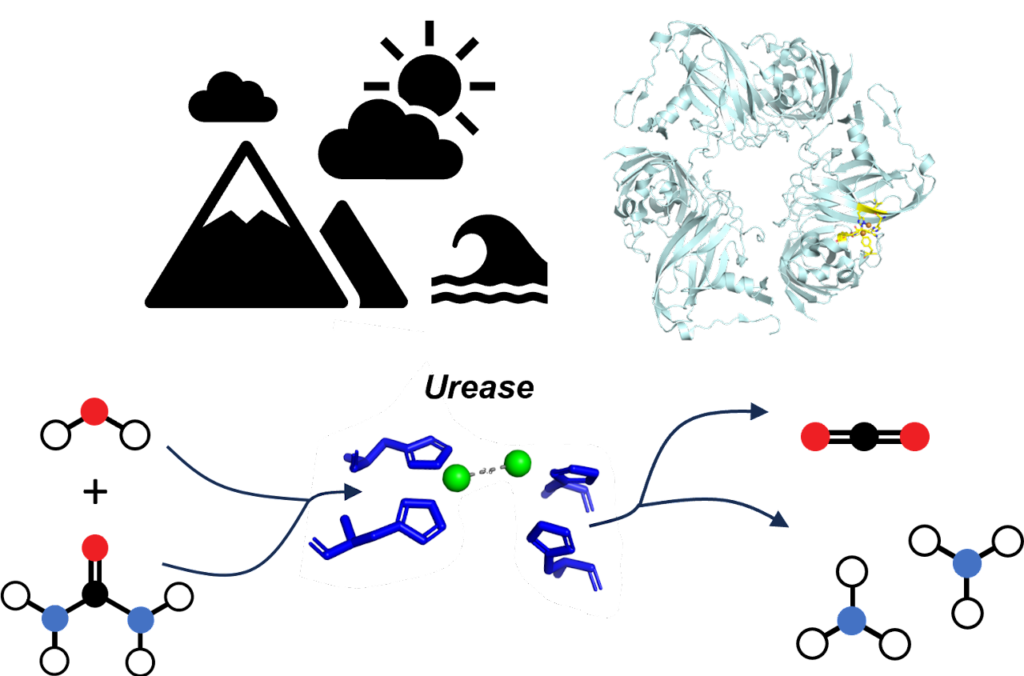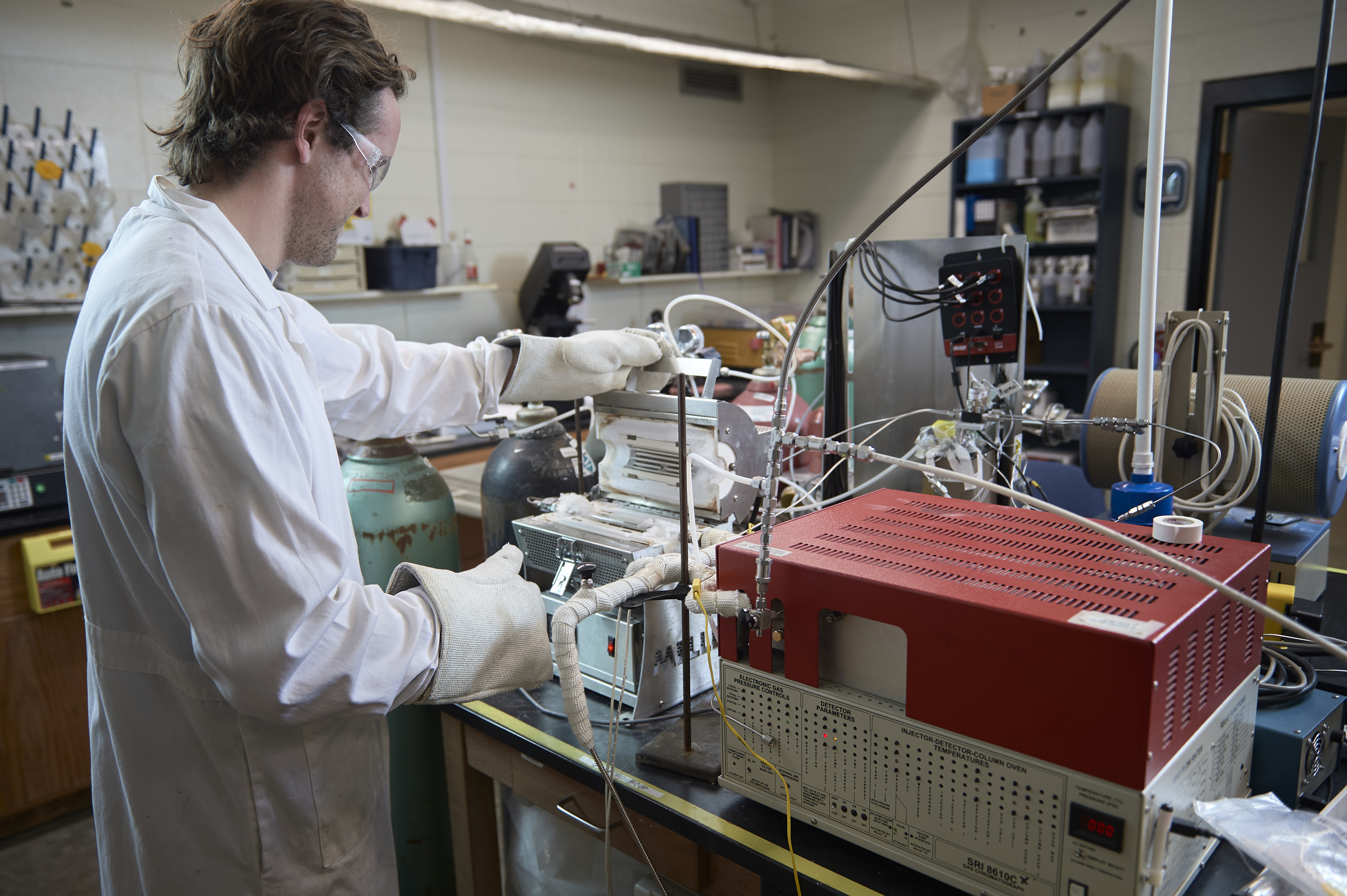— Research Overview
Pioneering biomimetic
solutions
Cleaner, less energy-intensive chemical processes rely on efficient catalysts. Traditional catalyst design methods are slow and costly, while computer-aided approaches have trouble bridging the gap to reality. Nature may hold the key to rational catalyst design in metalloenzymes. However, these heat-sensitive biocatalysts currently fall short of many industrial needs. We imagine that by adhering to nature’s blueprint with biomimetic catalyst design, we will obtain high activity, rationally developed catalysts.

Inspiration: Seek catalytic solutions in nature
We are working to compile a database of metalloenzymes with chemical functionality that is relevant to commodity chemical production. Our group is especially interested in the conserved active sites within the monooxygenase, urease, carbonic anhydrase, and decarboxylase enzymes. We imagine that computational protocols could screen metalloenzyme databases with application-based criteria for candidate catalysts

Synthesis: Generate heterogeneous catalysts
Novel synthetic approaches generate single-site zeolite catalysts with highly tunable properties depending on the transition metal, topology, acidity. We are equipped with hydrothermal synthesis reactors and high temperature furnaces to synthesize zeolites, to ion exchange metal sites, and to post-synthetically modify our catalysts.

Characterization: Understand the catalyst properties
We are equipped with in operando capabilities to characterize the active sites in the catalyst. These tools include diffuse reflectance IR, UV, and Raman spectroscopies coupled with mass spectrometers. Additional physicochemical characterization tools (Adsorption, XRD, SEM, TEM, ICP) are available with our collaborators and in user facilities such as ICAL and the CBE.

Testing: Apply the catalyst to a reaction
Our group focuses on industrial decarbonization, light gas utilization, and carbon capture. Thus, we aim to combine gas phase molecules to open new pathways to commodity chemicals that modern society demands.

Crawford Group Opportunities
Our team is built of motivated PhD students interested in working at the interface of heterogeneous and enzyme catalysis. Learn More on our Opportunities page.

